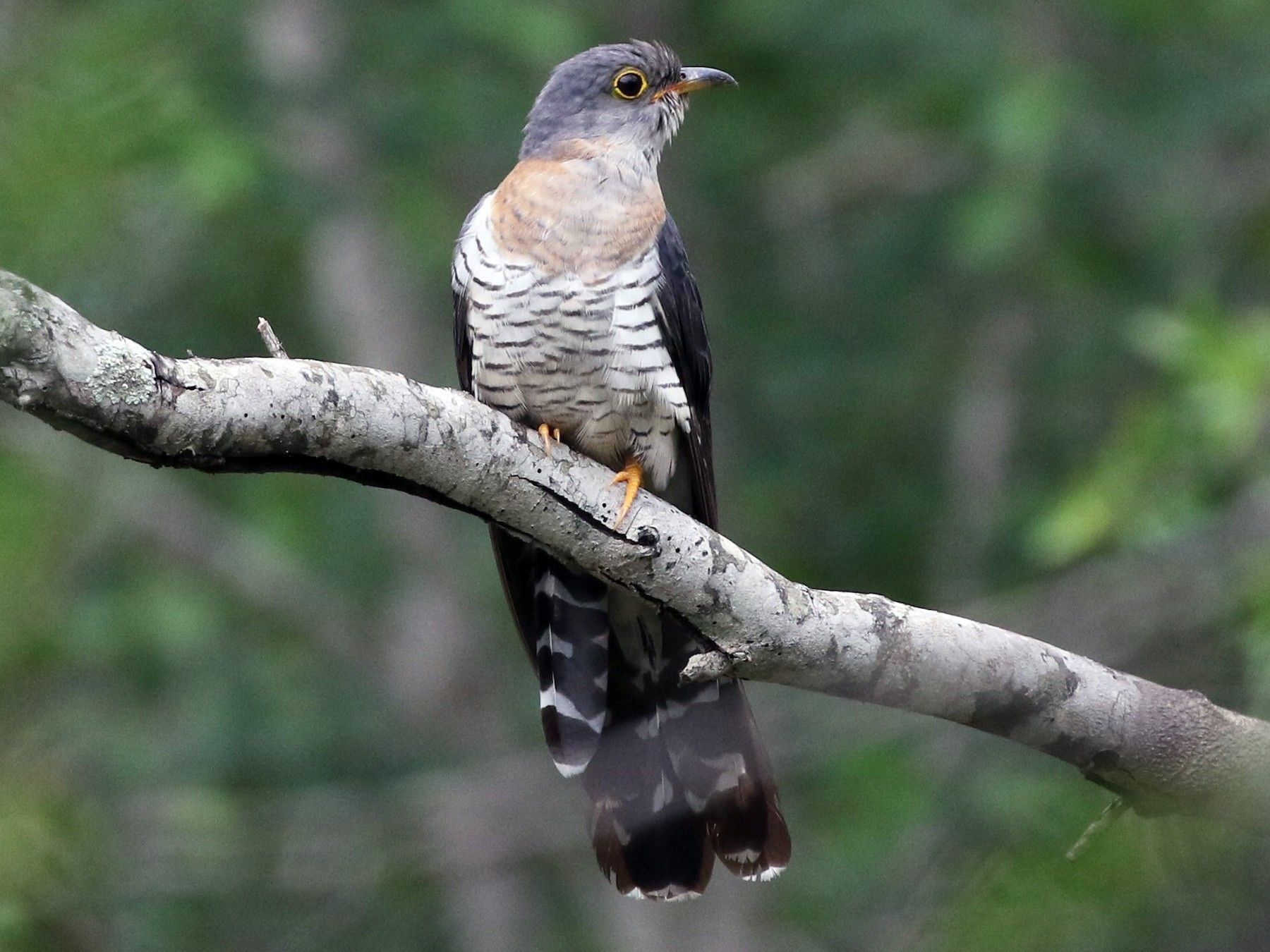Red-chested cuckoo
Cuculus solitarius
ORDER
Passeriformes
FAMILY
Pycnonotidae
GENIUS
Pycnonotus
2690
Observations
1900
Photos
26
Recordings
06
Videos

Description
A mostly grayish cuckoo with banding below, including a broad rusty band across the upper breast. The immature has barred underparts and a charcoal back, throat, and breast. It can be very secretive, and when it flies fast on pointed wings, it strongly resembles a small goshawk. Its brood-parasite hosts include wagtails, robin-chats, and thrushes. Resident and (in the southern parts of its range) migrant. Its presence is most often evidenced by its incessant and loud three-note “Pete-my-wife” song.
Distribution
It is found in Angola, Benin, Botswana, Burundi, Cameroon, Central African Republic, Chad, Republic of the Congo, DRC, Ivory Coast, Equatorial Guinea, Ethiopia, Gabon, Gambia, Ghana, Guinea, Guinea-Bissau, Kenya, Lesotho, Liberia, Malawi, Mali, Mozambique, Namibia, Nigeria, Rwanda, Senegal, Sierra Leone, Somalia, South Africa, Sudan, Swaziland, Tanzania, Togo, Uganda, Zambia, and Zimbabwe.[1] In Southern Africa it is a common breeding migrant, found throughout the area except for the drier west. The preferred habitats for the red-chested cuckoo are woodlands. The red-chested cuckoo is normally seen by itself rather than in the company of birds of the same species
Habitat
In Southern Africa it is a common breeding migrant, found throughout the area except for the drier west. The preferred habitats for the red-chested cuckoo are woodlands. The red-chested cuckoo is normally seen by itself rather than in the company of birds of the same species.
Feeding
It eats insects including hairy caterpillars, spiders, centipedes, millipedes, slugs, snails, small vertebrates and berries. The red-chested cuckoo takes on more than a single mate (it is polygamous). The nesting habit of red-chested cuckoo is to use the nest of another bird (brood parasitism).
Breeding
It is a brood parasite, meaning that it lays its eggs in other bird nests. The host, thinking that the egg is its own, incubates the egg and cares for the chick. The following bird species have been recorded as host of the Red-chested cuckoo: Egg-laying season is from October-January The female often has a hard time getting into the host's nest, as it is constantly mobbed and attacked. Amazingly, once it has got into the nest it can remove the host's egg and lay one of its own in less than 5 seconds! In one observation, the female laid 20 eggs in one breeding season. Once the chick is about two days old, it evicts the host's eggs and nestlings. It stays in the nest for 17-21 days, becoming fully independent 20-25 days later. The Red-chested Cuckoo is bigamous -- which means it takes on more than a single mate. Their eggs are dark brown and laid in the nest of another bird - its favorite breeding host being the robin. The surrogate family then raises the young. The cuckoo eggs are much bigger than the robin’s. The Red-chested Cuckoo does not remove the robin eggs, but the cuckoos usually hatch about 3 or 4 days earlier than the chicks of the hosts. Then the young cuckoo chicks tip the robin chicks out when they hatch
Threats
Not threatened, in fact it is well represented in protected areas.
References
BirdLife International (2021) Species factsheet: Cuculus solitarius. Downloaded from http://www.birdlife.org on 21/01/2021. Recommended citation for factsheets for more than one species: BirdLife International (2021) IUCN Red List for birds. Downloaded from http://www.birdlife.org on 21/01/2021.